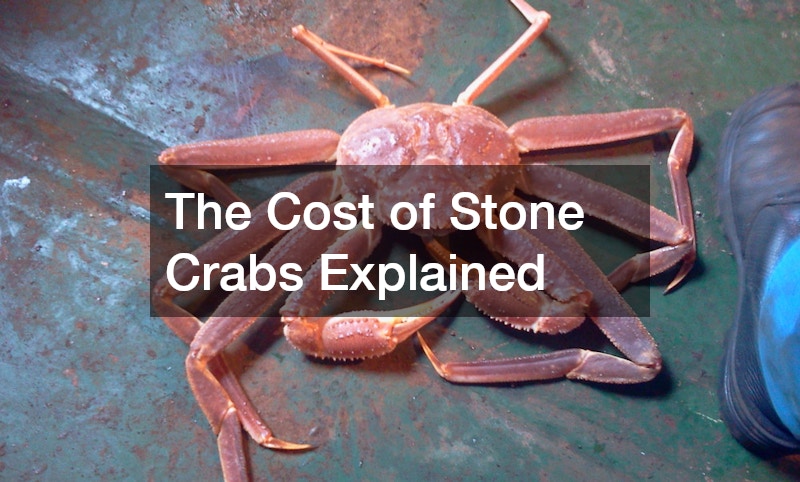Stone crabs are a prized delicacy, particularly in regions such as Florida, where they are harvested. Their sweet, succulent meat is highly sought after, making stone crabs a popular choice for seafood enthusiasts. However, this delicacy comes with a hefty price tag. Understanding the factors contributing to the cost of stone crabs can provide insight into why these crustaceans command such high prices. Here’s a detailed look at the cost of stone crabs and the elements that influence their pricing at places like https://crabs.com/.
Harvesting and Sustainability
One of the primary factors affecting the cost of stone crabs is the method of harvesting and the emphasis on sustainability.
Stone crabs are unique in that only their claws are harvested; the crabs themselves are returned to the water to regenerate their claws. This practice, mandated by law, is designed to ensure the sustainability of the stone crab population. However, it also means that each crab can only be harvested once per season, limiting the overall supply.
The process of harvesting stone crabs is labor-intensive. Fishermen set and retrieve traps from the ocean floor, a task that requires significant effort and time. Additionally, the traps must be regularly checked, and only crabs with legal-sized claws can be kept. This meticulous process contributes to the high cost of stone crabs.
Limited Season and Supply
The stone crab season runs from October 15 to May 1, a period during which the crabs are actively harvested. This limited season means that the supply of stone crabs is restricted to just over six months each year. Outside of this period, stone crabs are not legally harvested, further limiting their availability.
The limited supply directly impacts the price. During the off-season, the scarcity of stone crabs can drive prices even higher as demand continues to outstrip supply. Restaurants and seafood markets that want to offer stone crabs year-round may resort to freezing claws, which can still be costly due to the need for proper storage and preservation.
Labor and Handling
The labor involved in catching, handling, and transporting stone crabs also contributes significantly to their cost. Once the crabs are caught, the claws must be carefully removed to ensure the crab can survive and regenerate its claws. This requires skill and precision, adding to labor costs.
After harvesting, stone crab claws must be promptly cooked to preserve their freshness and flavor. This immediate cooking process is essential to maintain the quality of the meat, adding another layer of handling and labor. The claws are then chilled and transported, often over long distances, to reach markets and restaurants. The logistics of handling perishable seafood involve careful temperature control and timely delivery, all of which add to the overall cost.
Market Demand
Stone crabs are highly coveted in the culinary world, particularly in upscale restaurants and seafood markets. Their unique flavor and texture make them a favorite among seafood lovers, driving high demand. This demand is not limited to local markets; stone crabs are also shipped nationally and internationally, further broadening their appeal.
The high demand coupled with limited supply creates a classic case of supply and demand economics. As demand rises, so do prices. Restaurants that serve stone crabs often feature them as a premium menu item, willing to pay top dollar to secure a supply of this delicacy. This willingness to pay high prices trickles down to consumers, who in turn, pay a premium for stone crab dishes.
Regulatory Compliance
Compliance with regulations designed to protect stone crab populations also influences the cost. Fishermen must adhere to strict guidelines regarding the size of claws that can be harvested, the seasonality of fishing, and the number of traps used. These regulations are enforced to ensure the long-term sustainability of stone crabs but can also limit the volume that can be legally caught and sold.
In addition to harvesting regulations, there are costs associated with obtaining licenses and permits required for stone crab fishing. Fishermen must invest in proper equipment, traps, and boats, and comply with inspections and reporting requirements. These regulatory costs are factored into the overall price of stone crabs.
Quality and Size
The size and quality of stone crab claws also play a significant role in their cost. Larger claws with more meat are more desirable and therefore more expensive. Stone crab claws are typically graded by size, with jumbo and colossal claws fetching the highest prices. The meat’s sweetness and texture, influenced by the crab’s diet and environment, also contribute to the perceived value and cost.
.

